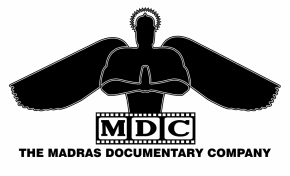Uthiramerur Sundara Varadar Temple
|
|
Uthiramerur Sundara Varadar Temple
Many years ago, I was introduced to the village of Uthiramerur. Little did I know this trip with Dr.T Sathyamurthi would grow into one of the most interesting projects I had done. My visits on the project extended to over 2 years. During the project, I visited the Sundara Varadar Temple many times. I was fascinated by the uniqueness of the temple. Sundara Varadar Temple , a Nava Murti Sthalam, houses nine different forms of Lord Vishnu. In this temple, the Lord is found in the standing, sitting and reclining pose. In one of the sanctums, we are able to see Lord Shiva and Lord Brahma. For me the excitement is born from walking around and touching a site where history is rich and the site has been visited by great men of our heritage. In Sundara Varadar Temple, it is believed that the great warriors and rulers of the Mahabharata walked and worshiped the deities. This information dates the existence of the temple to around 300 BC when the Mahabharata epic had taken place. Pancha Varada Kshetram is a name given to the temple by virtue of the idols having been worshiped by the five Pandavas. The Goddess of the temple, Anandavalli, was worshiped by Draupadi. In more recent times, the village has gained fame by the unique form of governance evolved. Democracy in its early form was conceived by the elders of the village. The administration supported a democratic system and also electoral process. The electoral system was called “Kudavolai” and the rules for nominating in elections and the voting systems were the fore runner for today’s electoral systems. All this was made possible because the village was gift to 1200 Vedic scholars. Nandivarma Pallavan made this gift in the 8th century to support and propagate Vedic knowledge and Vedic Tradition. This gave the village the proud name of Chaturvedimangalam. Sundara Varadar Temple was also a Pallavan heritage with extensive works done to the temple by later rulers of the Chola and Vijaynagar dynasty. The brick and mortar elements used in the construction dates the temple the 6th century. So it is assumed that the Pallavas must have rebuilt the temple during their reign. The temple has a three tier design. Each tier of the temple houses different forms of Lord Vishnu. Starting from the top floor, the upper tier houses Ranganathar reclining on Adi Sesha with Brahma emerging out of lotus from his navel. Lord Shiva is found near his feet. In the next floor below are Vaikuntha Varadar shrine along with Yoga Narasimha, Lakshmi Varaha and Krishna with four arms preaching Gita to Arjun. While on this floor we can walk out on to a large balcony. Here, we will be surprised by a stucco figure of Dakshinamurti on the Vimana. Traditionally, the image of Dakshinamurti is found in all temples of Lord Shiva. The reason for this image is that the temple dates back to a time when all temples had a Dakshinamurti figure facing the South. On the ground floo, we find the presiding deity of the temple, Sundara Varadaraja Perumal, along with Sri Devi and Bhoo Devi. This level also contains Achuta Varadar, Aniruddha Varadar and Kalyana Varadar. Lime mortar was the medium of construction. The deities are also made of lime mortar. The priests told me that the idols are periodically coated with the black soot that is left behind after burning Sambarani. It for this reason that the Lord is never decorated with flowers. When we walk into the temple we encounter the three main elements of any Vishnu temple.... Garuda Kambam, the bali peetha and a small Garuda shrine. Lakshmi in the form of Anandavalli is located in the prakara in a separate sub-shrine. The temple has a large tank on the outside. Facing the main entrance is a Hanuman shrine with a image of the Lord in a bass relief form. This image was installed Sage Vyasaraja, the Guru of the King Krishnadevaraya. The main entrance is topped up by a majestic seven tiered Gopuram. |

